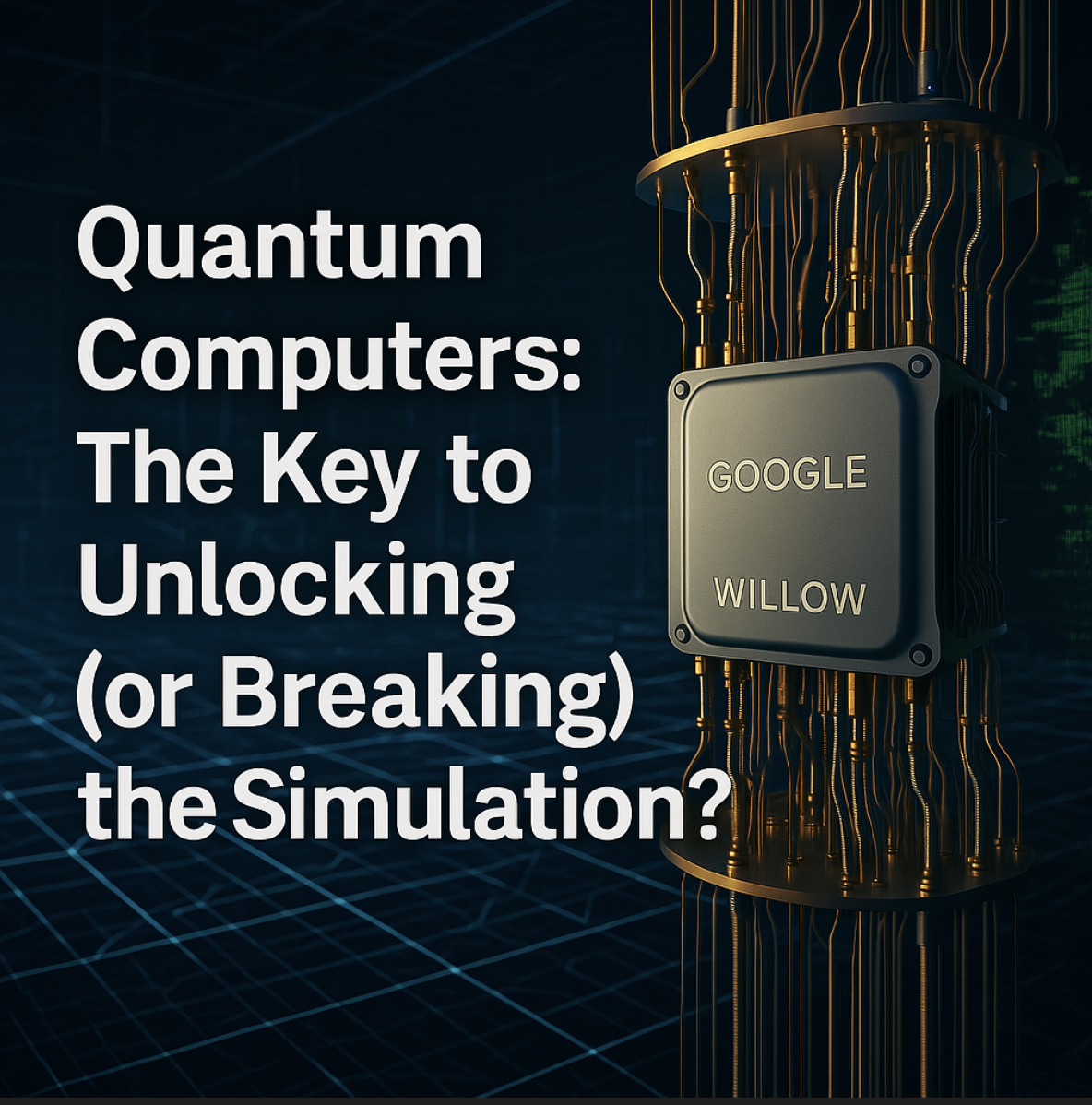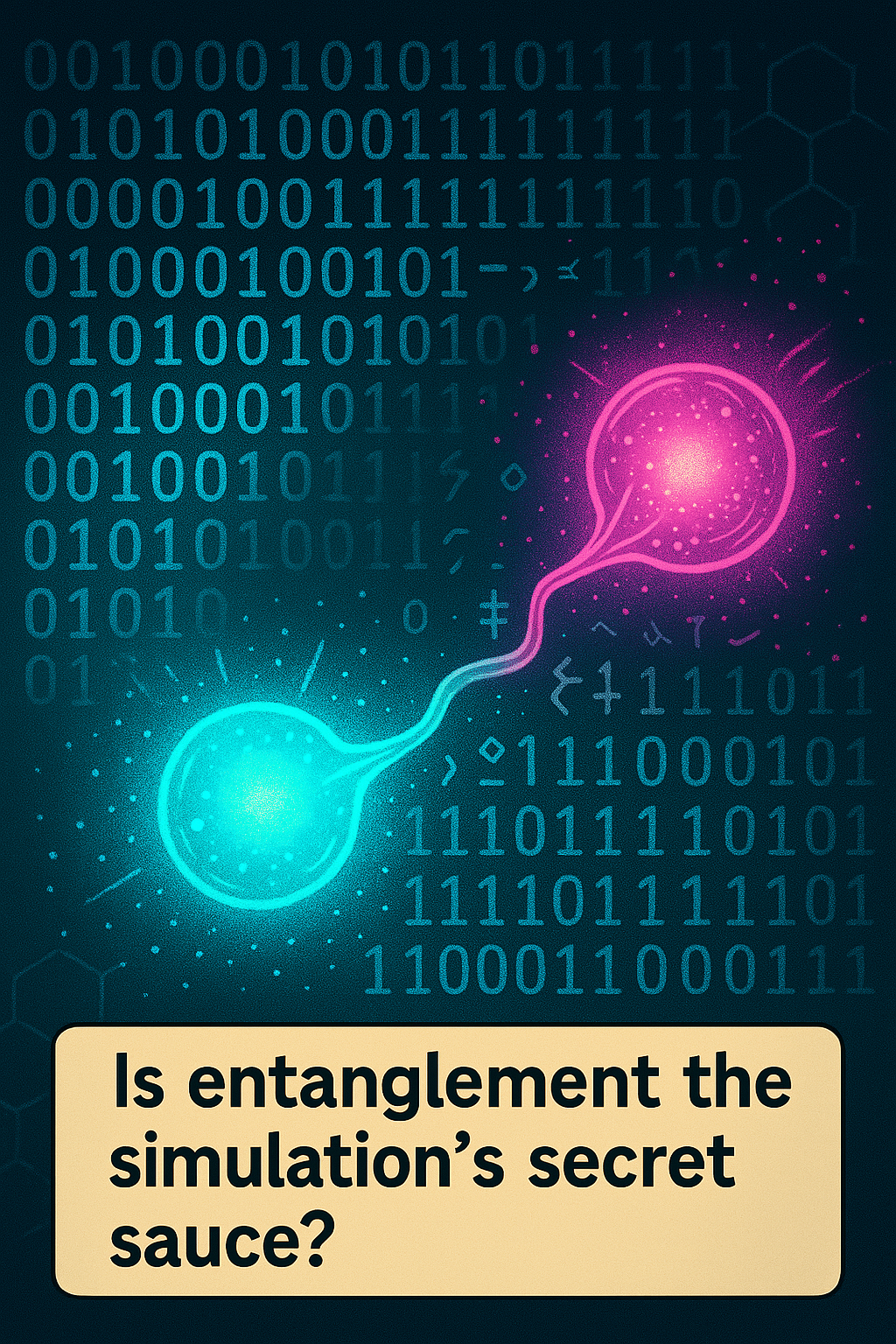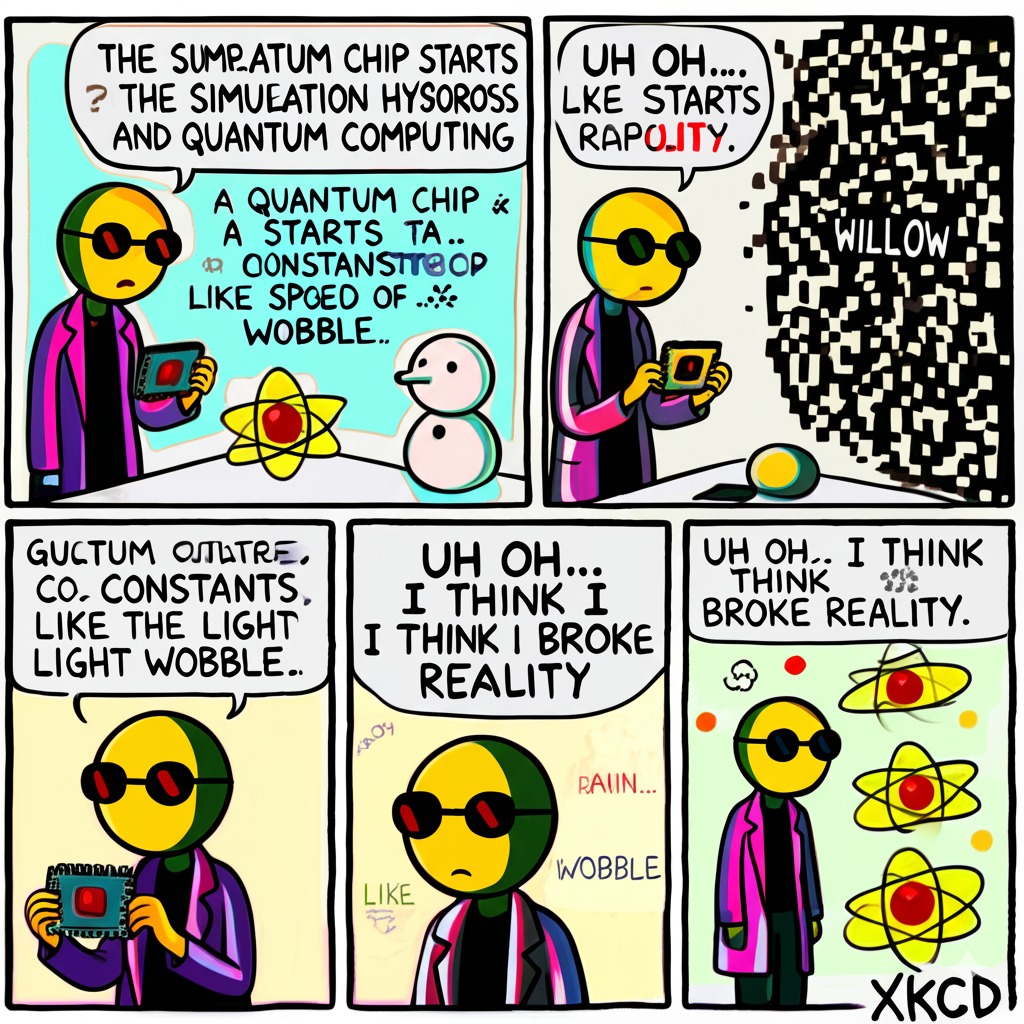Quantum Computers: The Key to Unlocking (or Breaking) the Simulation?
Quantum Computers: The Key to Unlocking (or Breaking) the Simulation?

What if reality is an illusion? The Simulation Hypothesis—the idea we live in a computer simulation—has fascinated scientists and philosophers for decades. But a key challenge remains: how to test it. Quantum computing could change that. This revolutionary technology blurs the boundaries between science and speculation. Breakthroughs like Google’s “Willow” quantum chip raise an intriguing possibility: these machines might interface with the “hypercomputer” behind our simulated reality—exposing its glitches.
A Quantum Leap Beyond Imagination
In December 2024, Google announced that its “Willow” quantum chip completed a complex computation in under five minutes—a task estimated to take a classical supercomputer like Frontier 10 septillion years. This isn’t just a speed boost; it’s an unimaginable leap beyond classical computing, as detailed in Nature’s coverageNature’s coverage.
How does Willow achieve this? Quantum computers use superposition and entanglement to solve problems that would overwhelm even the most powerful classical machines. Where does this power come from? Physicist David Deutsch suggests it might involve the multiverse—computations spanning parallel realities. But what if there’s another explanation, one tied to the Simulation Hypothesis? Could quantum computers be reaching outside our universe, borrowing power from the system simulating us?
The Universe as a Cosmic Computer
Picture the universe as a giant computational engine, sparked by the Big Bang and chugging along within the limits of its own physics—limits tied to energy, matter, and concepts like the Thermodynamic Limit or Landauer Limit. Classical computers fit neatly within this framework. But quantum computers? They’re a different beast. Their ability to tackle problems like Willow’s benchmark, reported by The Verge, suggests they might be playing by rules our universe shouldn’t allow.

So, here’s the wild idea: What if quantum computers aren’t just working inside our reality? What if they’re “offloading” their toughest calculations to a “hypercomputer”—the hypothetical machine running our universe as a simulation? In this view, quantum entanglement—where particles seem to instantly influence each other across vast distances—could be a shortcut in the simulation’s code, and Willow’s insane speed might be a glimpse of the hypercomputer’s true power, as explored in The Quantum Connection.
From “What If” to “How Do We Know?”
The Simulation Hypothesis takes an intriguing turn when applied to quantum computing. If reality runs on a hypercomputer with finite but vast resources, pushing quantum systems to their limits could trigger “simulation lag”—reality glitches like an overloaded video game. This testable angle aligns with Phys.org’s analysis of simulation stress-testing.
This isn’t just speculative thinking: if quantum computers interface with an external computational layer, evidence could emerge under extreme computational loads. Specifically:
- Define the Limit: Calculate the maximum computational power our universe’s physics should allow—its thermodynamic ceiling.
- Push Past It: Build quantum systems that demand more than that ceiling permits.
- Watch for Cracks: Look for anomalies signaling the simulation’s strain, like:
- Shifts in Constants: Subtle wobbles in the speed of light or other “fixed” numbers.
- Quantum Weirdness: Unexpected quirks in quantum behavior beyond current theories.
- Time Hiccups: Tiny delays or inconsistencies in physical processes, like lag in a game.
If we see these glitches, it could suggest our reality’s a simulation. If we don’t, it might mean quantum power stays within our universe’s rules—or the hypercomputer’s just too good to falter.

Other Theories in the Quantum Realm
Alternatively, the multiverse theory (Deutsch, Many-Worlds Interpretation) suggests quantum computers (e.g., Willow) compute across parallel universes without an external simulator. Pilot-wave theory and digital physics avoid multiverses, instead relying on hidden variables or intrinsic computational properties.
Unlike these theories, I am suggesting that quantum computers might breach reality by accessing and overloading an external hypercomputer, potentially causing observable effects. This hypothesis favors testability, predicting glitches rather than parallel worlds.
The Reality Check
Let’s pause. This idea relies on unproven assumptions: that we’re in a simulation, that a hypercomputer exists, and that quantum computers access it. Currently, there’s no evidence of simulation lag, shifting constants, or external resources, as critics note IEEE Spectrum. Willow’s achievement is remarkable, but standard quantum mechanics explains it without invoking a cosmic simulator—or a multiverse, as argued in Quanta Magazine.
Occam’s Razor applies: why propose a hypercomputer when quantum mechanics already explains these phenomena? Testing this is difficult. Even with advanced quantum technology, detecting subtle anomalies or defining universal limits remains a massive challenge.
Why This Matters
Google’s Willow chip doesn’t prove we’re simulated, but it raises big questions. Quantum computers are redefining computational limits—could they reveal the multiverse, expose a simulation, or simply demonstrate the strange power of physics?
This quantum twist on the Simulation Hypothesis makes a philosophical puzzle testable. As quantum tech advances, could we build a machine that disrupts reality? For now, it’s a thrilling possibility.
What’s your take? Does Willow’s speed hint at a simulation, a multiverse, or just quantum mechanics doing its thing?
Key Citations
- Google’s new quantum chip achieves accuracy milestone
- Google reveals quantum computing chip with ‘breakthrough’ achievements
- The Quantum Connection to the Simulation Hypothesis
- How to test whether we’re living in a computer simulation
- The Case Against Quantum Computing
- The Argument Against Quantum Computers
- Willow processor - Wikipedia
- Why Google’s Quantum Computer Chip Willow Is A Game Changer
- Google’s 105-Qubit Willow Chip Achieves Major Quantum Milestones
Enjoy Reading This Article?
Here are some more articles you might like to read next: